It’s 9.15 am and we’ve finished our luxurious breakfast at the Radisson Blue still under the magic of our early morning visit to the Taj Mahal and are about to meet up with our guide, Vivek, to visit Agra Fort. After we get in the car and greet our driver Rajendar, Vivek suggests we stop off at a showroom called the Agra Marble Emporium to see how the inlay marble work on the TaJ Mahal is still made today by descendants of the original artisans. We don’t have to buy anything, he reassures us. Here we go again, I think.
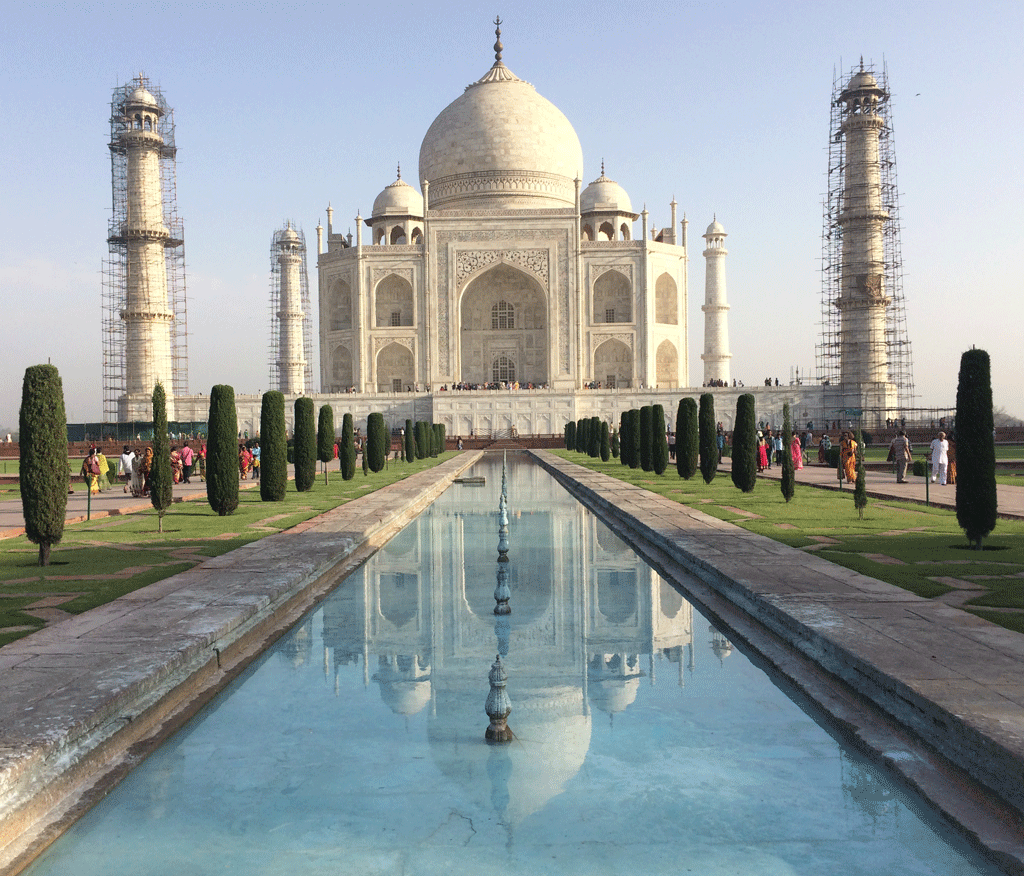
A man called Raj greets us and sits us down in front of a small table. Two young artisans are working next to him, one with a hand-driven grinding wheel. Raj explains how the pattern is drawn on the marble, then etched out by hand.
The tiny hand-ground inlay pieces are then inserted one by one – lapis lazuli for blue, tourmaline for red, crysophrase for green and mother-of-pearl for white. Once all the pieces are in place, they are taken out again then glued in after which they are sanded so that they are exactly flush with the marble.
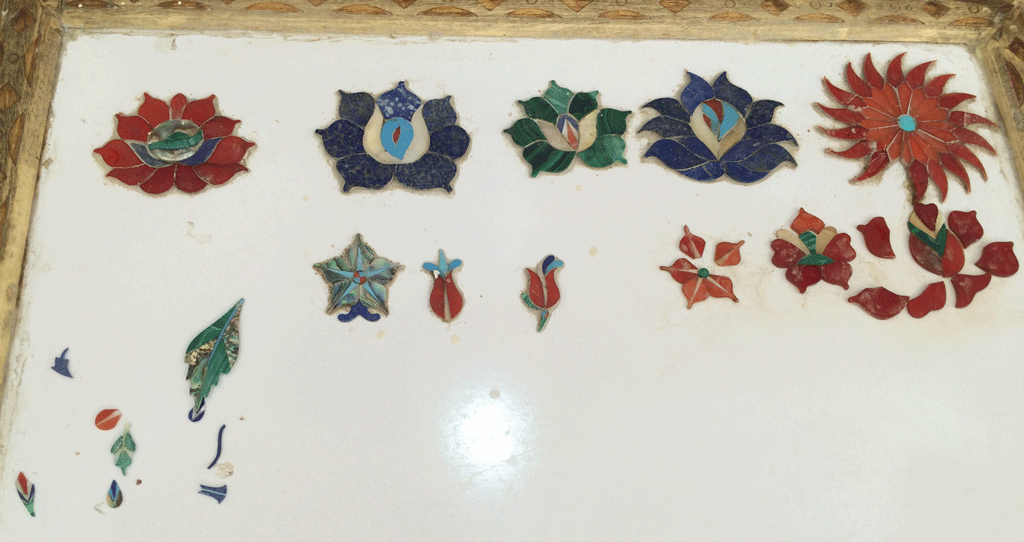
Raj takes us into the showroom and I, the non-shopper, am overwhelmed. I love everything I see! I could buy half the shop – except perhaps the elephants. Raj invites us to take a seat and starts showing us some little translucent marble inlay tables that are very reasonably priced, shipping included. I am becoming seriously interested when Jean Michel indicates that he wants to talk to me.
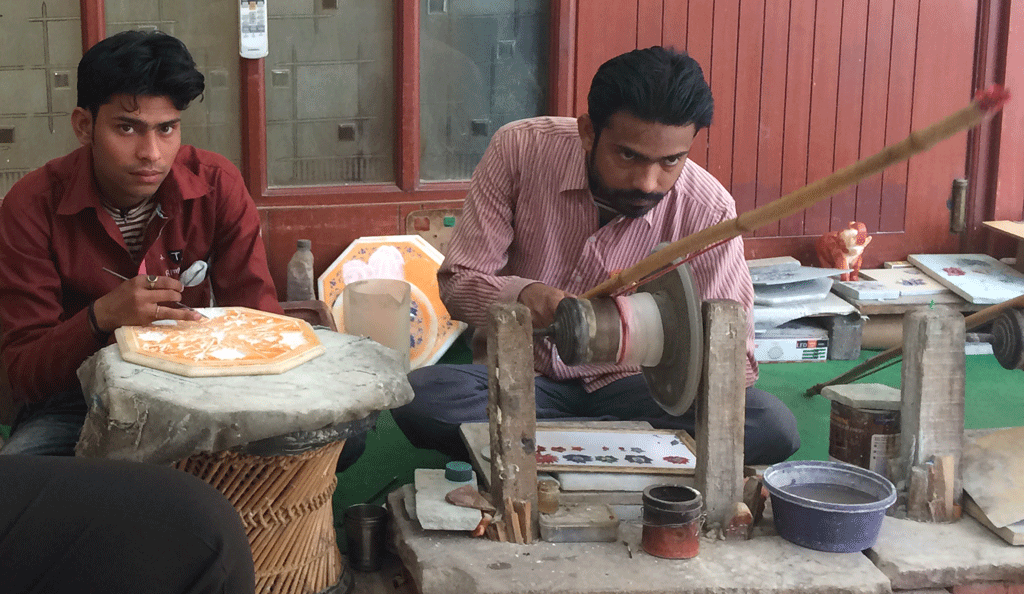
He then tells me that he has been wanting an marble inlay table for many years but in France, the price is prohibitive. He asks if I like the octagonal green marble table in the middle of the room. Well, yes, it so happens I do. After inquiring about the price, he tells me he would like to buy it. Wow! We discuss the matter with Raj and he has the table cleared. We then wonder about other shapes and sizes so he has some rectangular ones brought to the middle of the room, one of which was made by his father, he tells us.
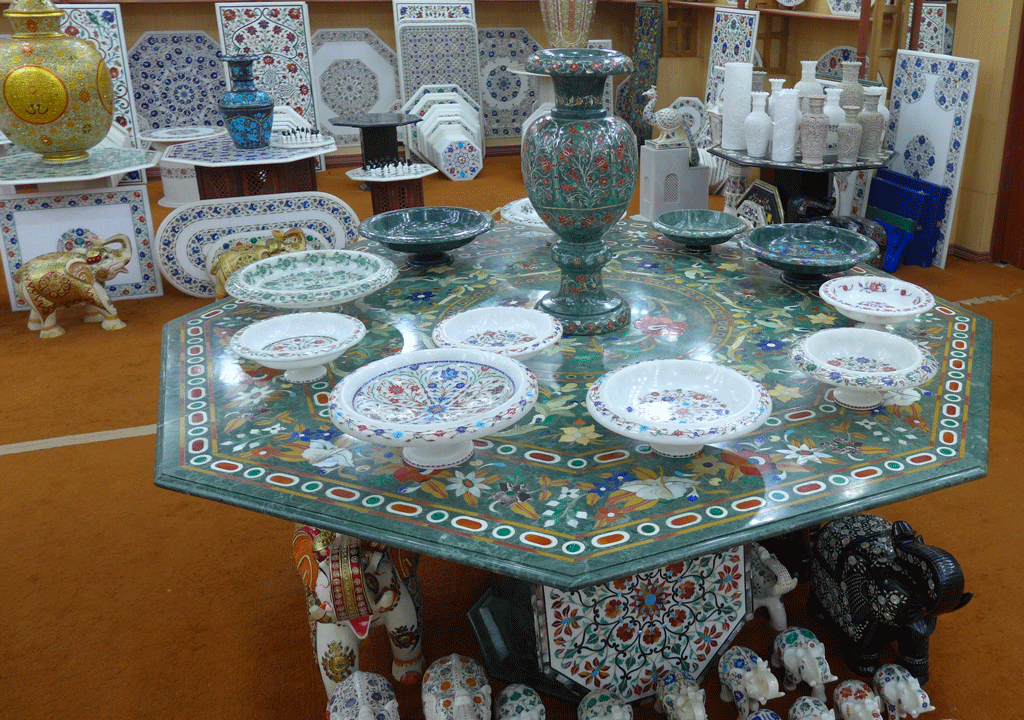
In the end, we decide on a smaller diameter made-to-measure repliqua of the octagonal table because I am afraid it might be too big. While Jean Michel is negotiating the price, I take another look around the room. I’d like to take a small souvenir home to a friend. I am shown into another room with little marble inlay boxes and choose one. Raj comes in and asks me my favourite colour. He then gives me another box as a present.
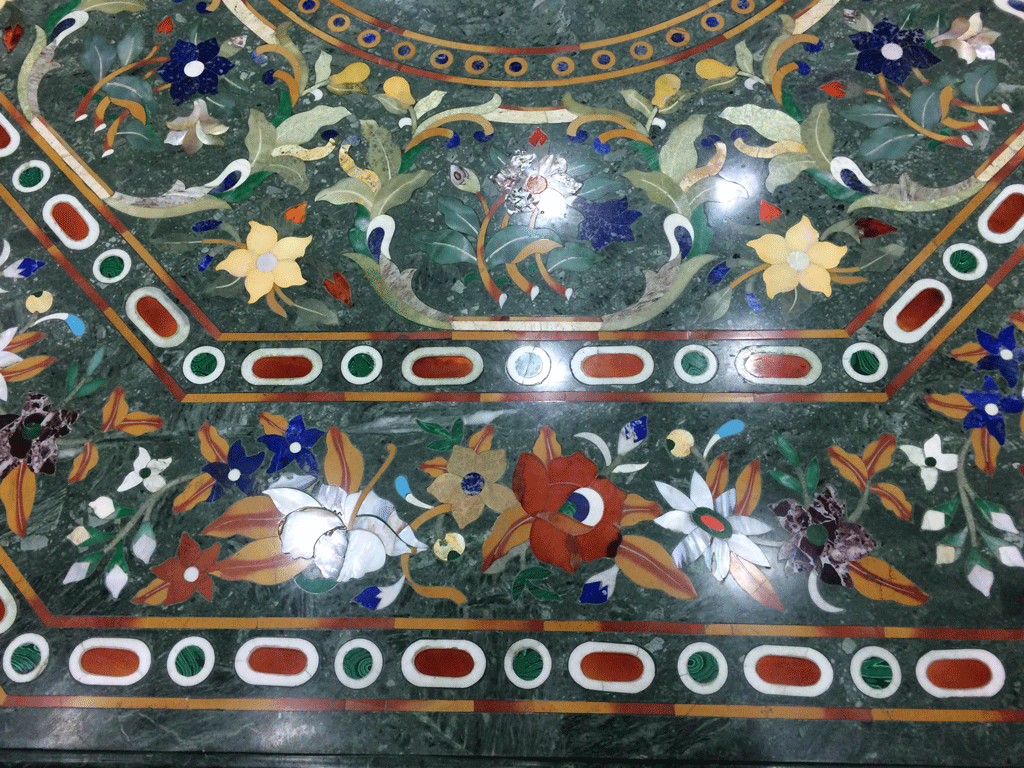
We leave the showroom walking on air (so does Vivek!) and set off for Agra Fort. Our table should arrive in France in about three months’ time.
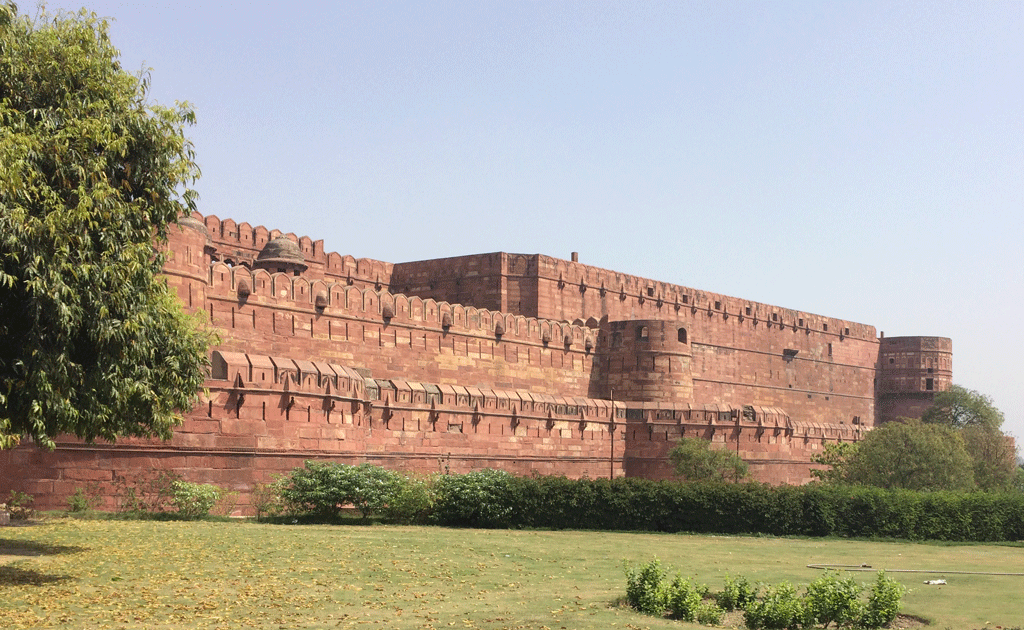
Agra Fort is actually a walled city today but was originally a fort. Do you remember Akbar, the Mughal emperor who built Fatehpur Sikri that we visited yesterday? Because of its central location, he made Agra his capital in 1558. Akbar had the fort rebuilt with his favourite red sandstone but it was not until the reign of his grandson, Shah Jahan, that it became what it is today.
As we know, Shah Jahan, who built the Taj Mahal in memory of his wife, Mumtaz Mahal, had a penchant for white marble so he destroyed some of the earlier buildings in the fort and replaced them with inlaid marble.
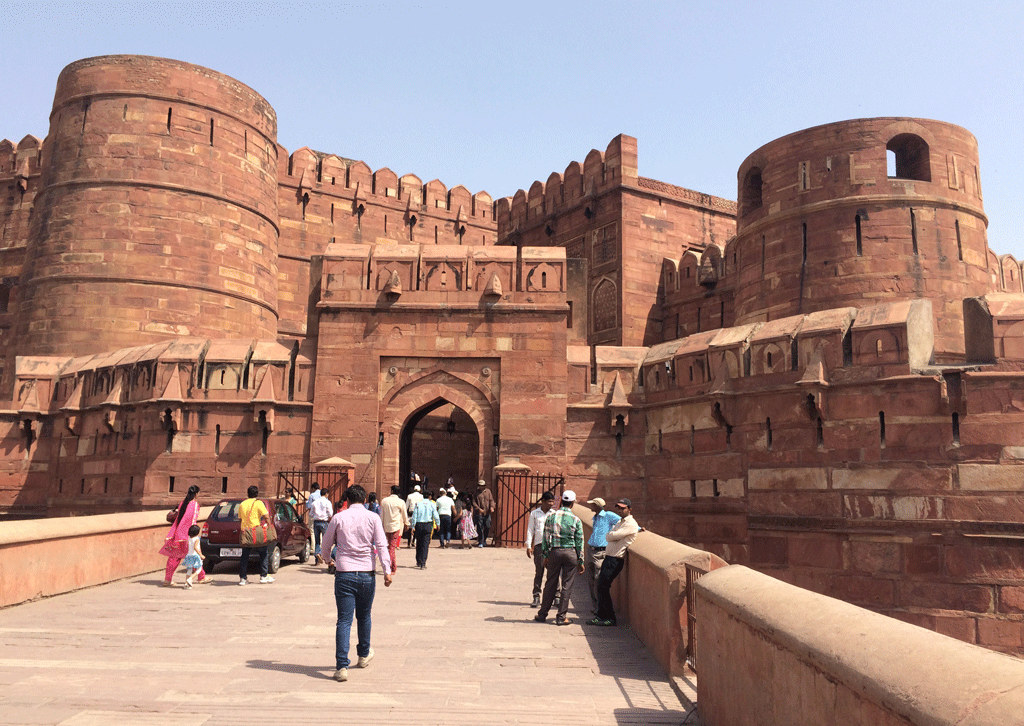
The impressive double walls are 20 m high and 2.5 km in circumference and contain a labyrinth of buildings, many of which are still used by the military so are not open to the general public.
The sole entry point today is the Amar Singh Gate. It used to be guarded by a crocodile-infested moat. Today, there are only a few monkeys.
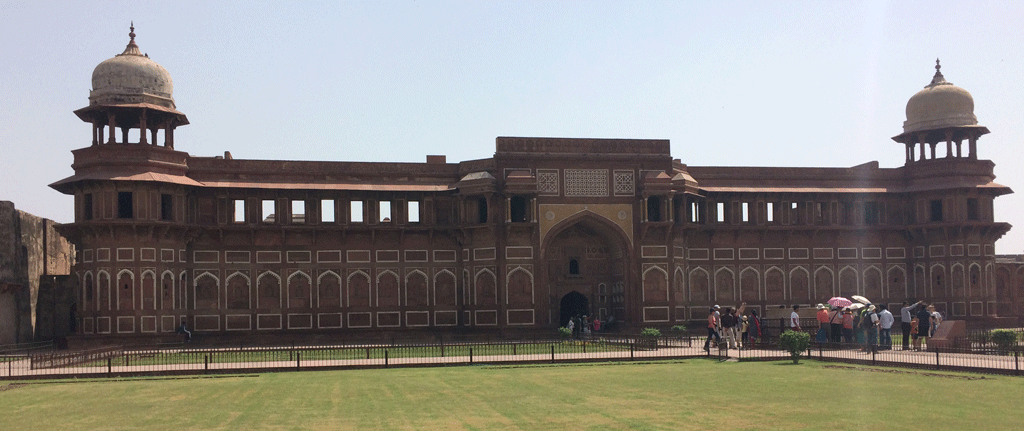
We start with the huge red sandstone building of Jahangir’s Palace, probably built by Akbar for his son Jahangir. Its beautiful galleries are intricately carved. A huge bowl in front of the palace called Hauz_i-Jehangir, carved out of a single block of stone, was used for bathing.
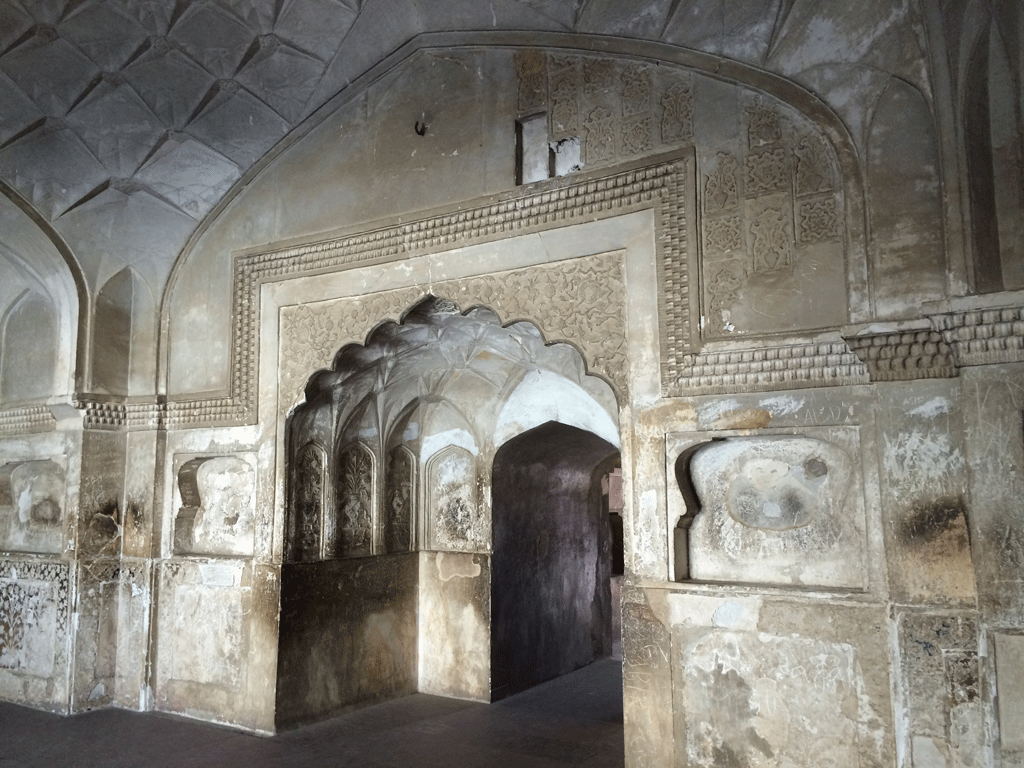
Next is the Diwan-i-Am or Hall of Public Audiences, used by our friend Shah Jahan for domestic affairs. Inside is a throne room where the Emperor used to receive petitioners.
We walk up a small staircase into a large courtyard. On the left is the women’s mosque, Nagina Masjid or Gem Mosque, built by Shah Jahan in 1635.
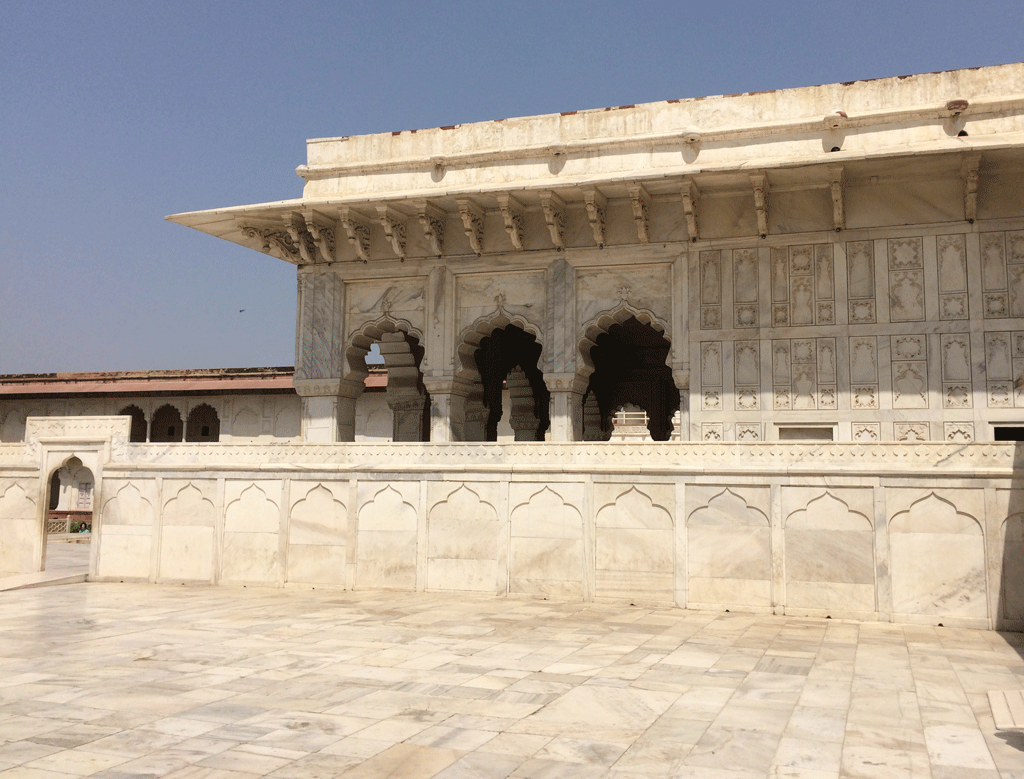
Vivek takes us across the courtyard to the Diwan-i-Khas or Hall of Private Audiences, which was reserved for VIPs and is much more elaborate.
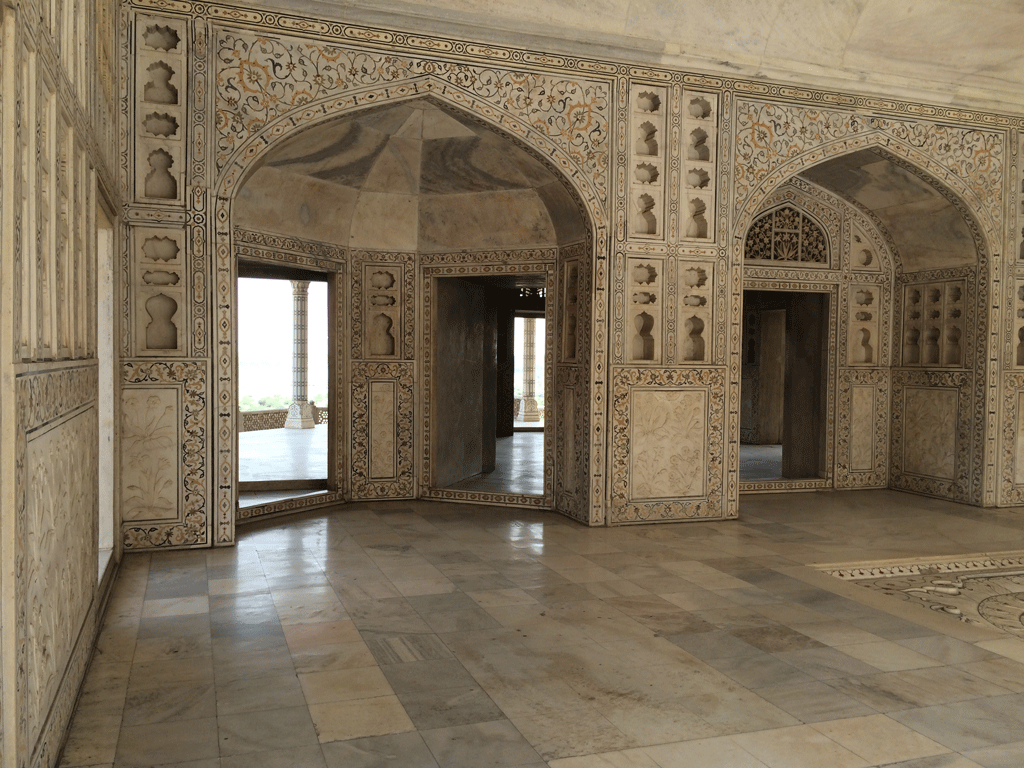
Next we come to Muasamman Burj, the octogonal white-marble tower and palace where Shah Jahan was imprisoned for eight years until his death in 1666. He could see the Taj Mahal from his marble balcony. We can just make it out in the distance.
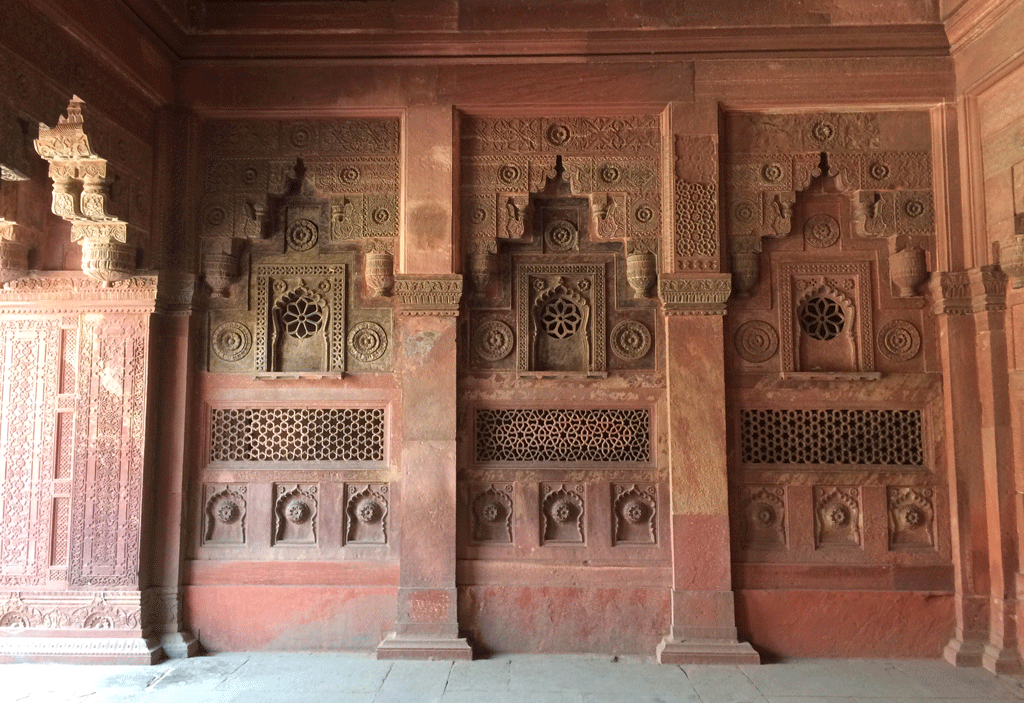
Vivek points out the buffalo at the water’s edge and the washerwomen on the other side. I wonder whether the job is any easier with the Taj Mahal as a backdrop.

It’s getting hotter by the minute so we all agree that it’s time for lunch. Vivek takes us to Pinch of Spice, another typical Indian restaurant for foreigners. We opt for the buffet upstairs and stick with our usual vegetarian fare followed by yoghurt and instant coffee. Vivek offers to take somewhere else for a proper Italian espresso but when in Rome …
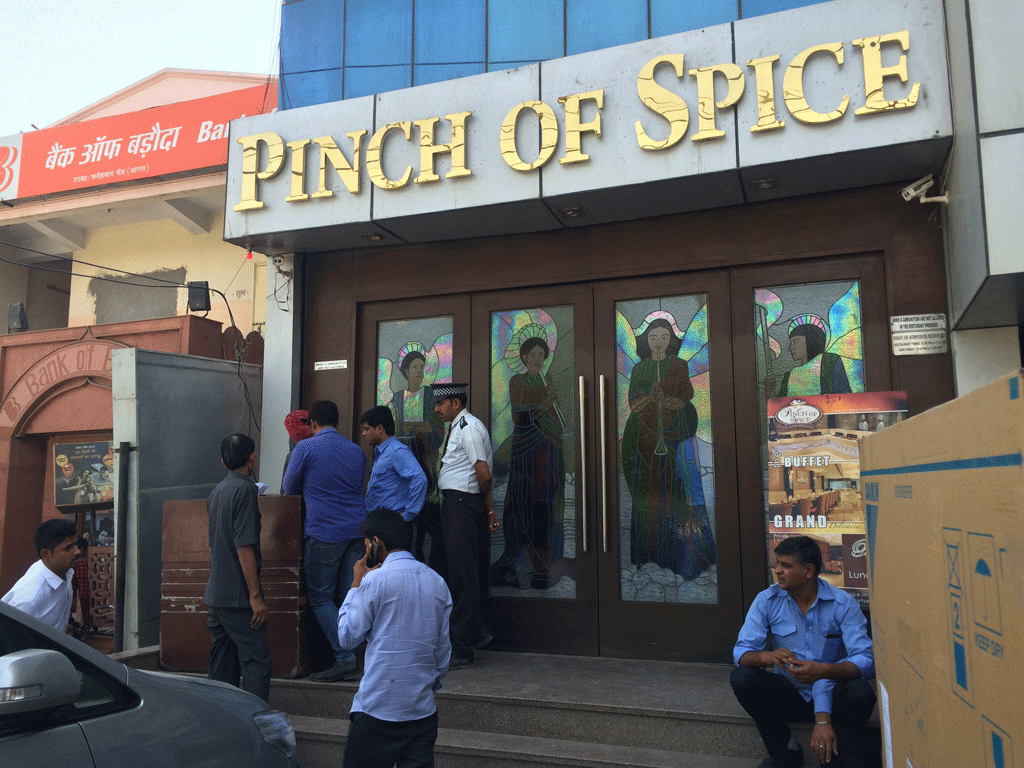
Outside, all the drivers are waiting for their sightseers, Rajendar among them. We still have the Baby Taj to visit before driving back to Delhi. But first, Vivek explains, the Agra Marble Emporium wants us to go back again and check something. It turns out to be the height of the marble stand that will support the table. We promise to confirm once we get back home and can check our own tables.
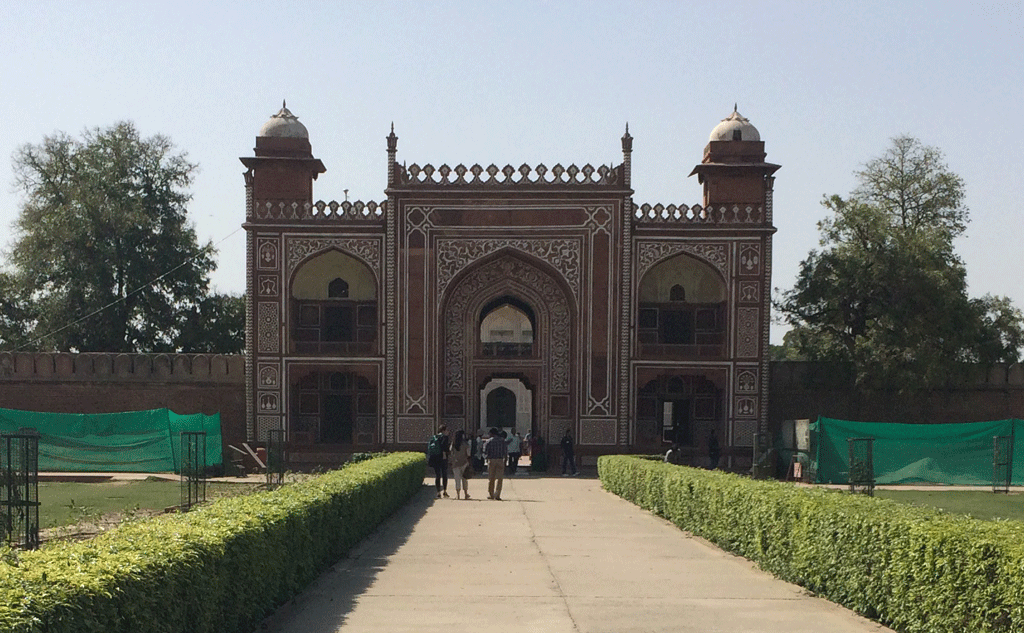
Vivek then tells us that Rajendar will take us to the Baby Taj as we’re running out of time and his assignment is up. That’s fine by us – it is an extra after all and we can visit it on our own with a guide book. When we buy our tickets, the vendor wants to keep them, but Jean Michel insists on having them back as he knows that since it’s a public building, the tickets will be “recycled”.
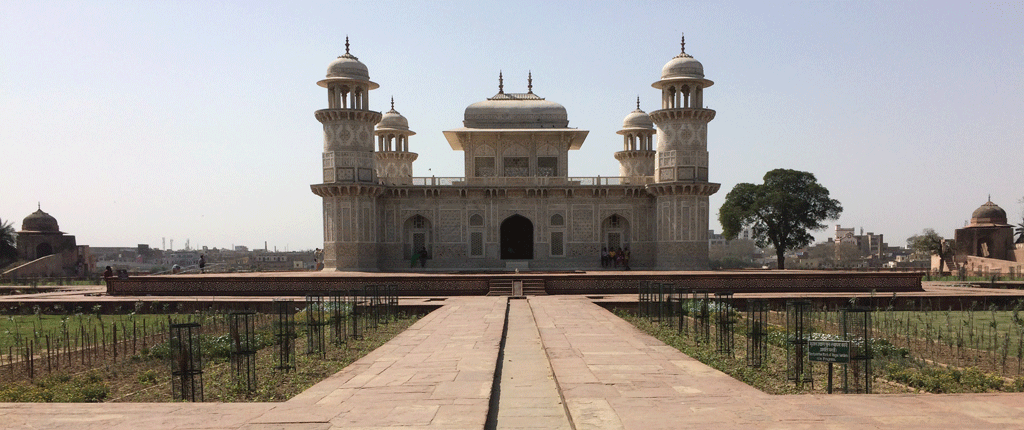
It’s not really called the Baby Taj of course, but the tomb of I’timad-ud-Daulah. Also a Mughal mausoleum, it is sometimes described as a “practice” for the Taj Mahal. Built in 1622 to 1628 (twenty years before the Taj Mahal was completed), it is considered to be a transition between the first phase of monumental Mughal architecture with its red sandstone and marble decorations – an example we’ve already seen is Humayun’s Tomb in New Delhi – and the second phase, based on white marble and pietra dura inlay, exemplified by the Taj Mahal.
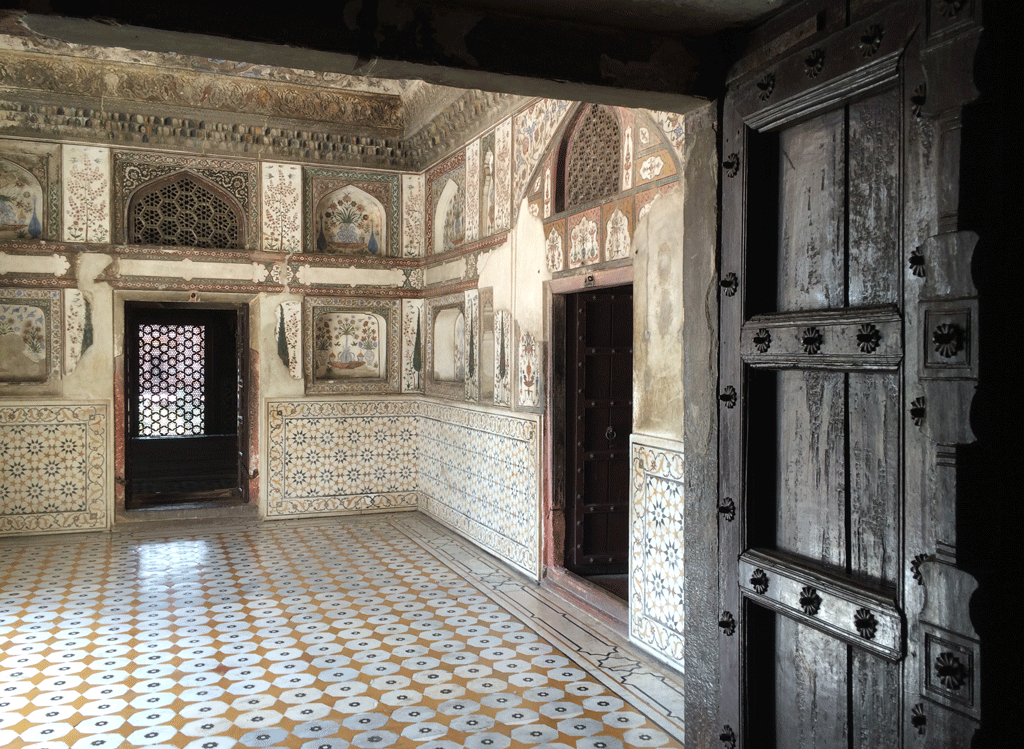
It was commissioned by Jahangir’s wife for her father, Mirza Ghiyas Beg, originally a Persian amir in exile. He was also the grandfather of Mumtaz Mahal for whom the Taj Mahal was built.
There are only a handful of visitors so we are able to enjoy the visit practically undisturbed. There is the same type of inlay work as the Taj Mahal, often more complex, depicting cypress trees, wine bottles, cut fruit and bouquets in vases. It is also sadly in need of renovation.
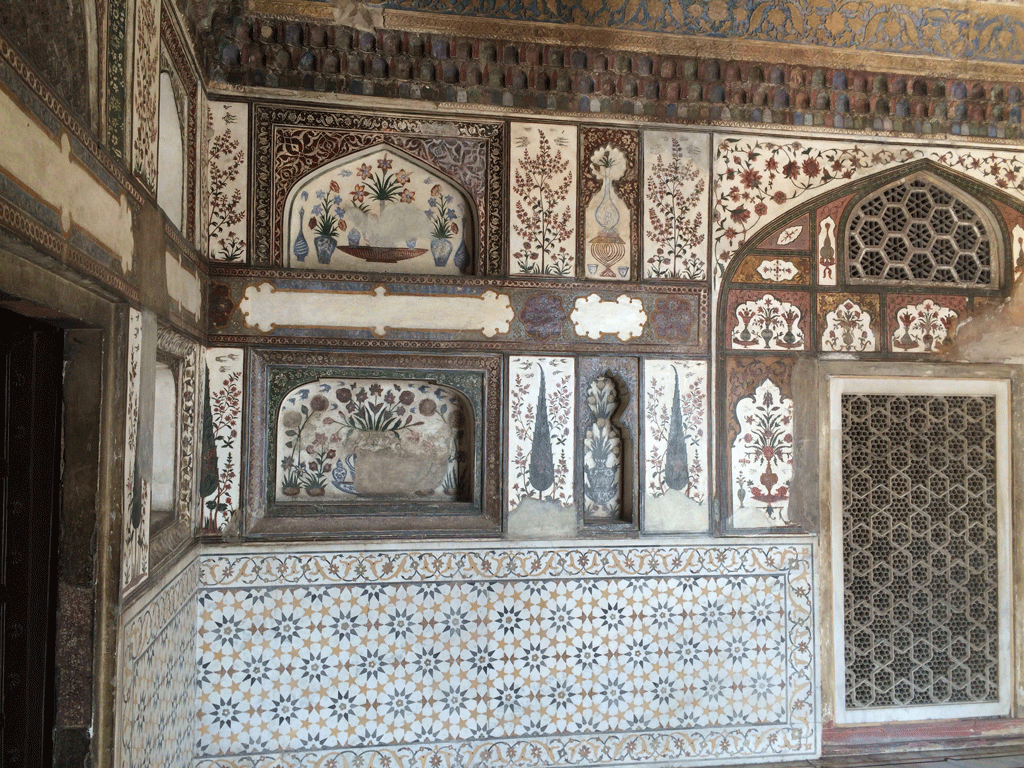
There are several buildings, all on a symmetrical pattern. The first combines red sandstone and inlay work while the second, along the river front, is made of white marble. There are small domed buildings on each side, with gardens in the process of being refurbished.
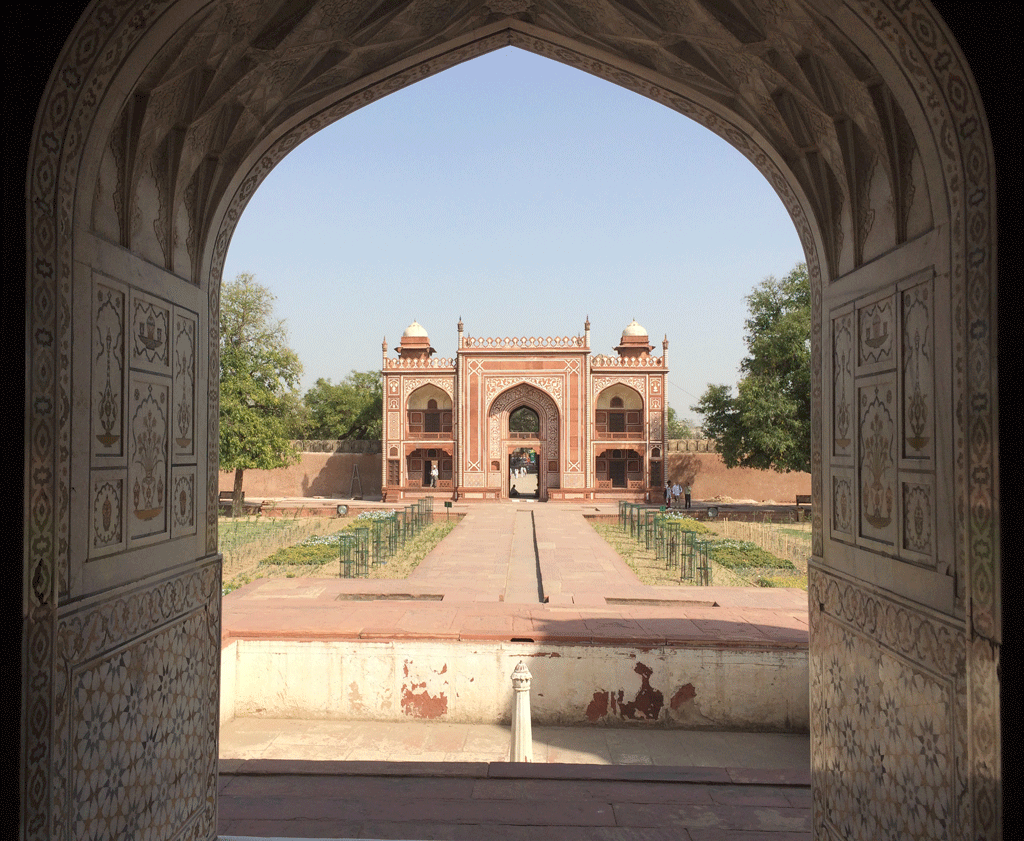
We feel it is a fitting end to our visit of Agra.
The next few hours are spent with Rajendar on a “real” motorway to New Delhi, the only one we’ve seen so far. There are not many cars and we see our first accident, no doubt due to the fact that the cars can go faster than usual. Rajendar continues to ask questions about France, always beginning with “Madam. In the France …” By the end of the trip, I feel I have learnt quite a lot about India just answering his queries!
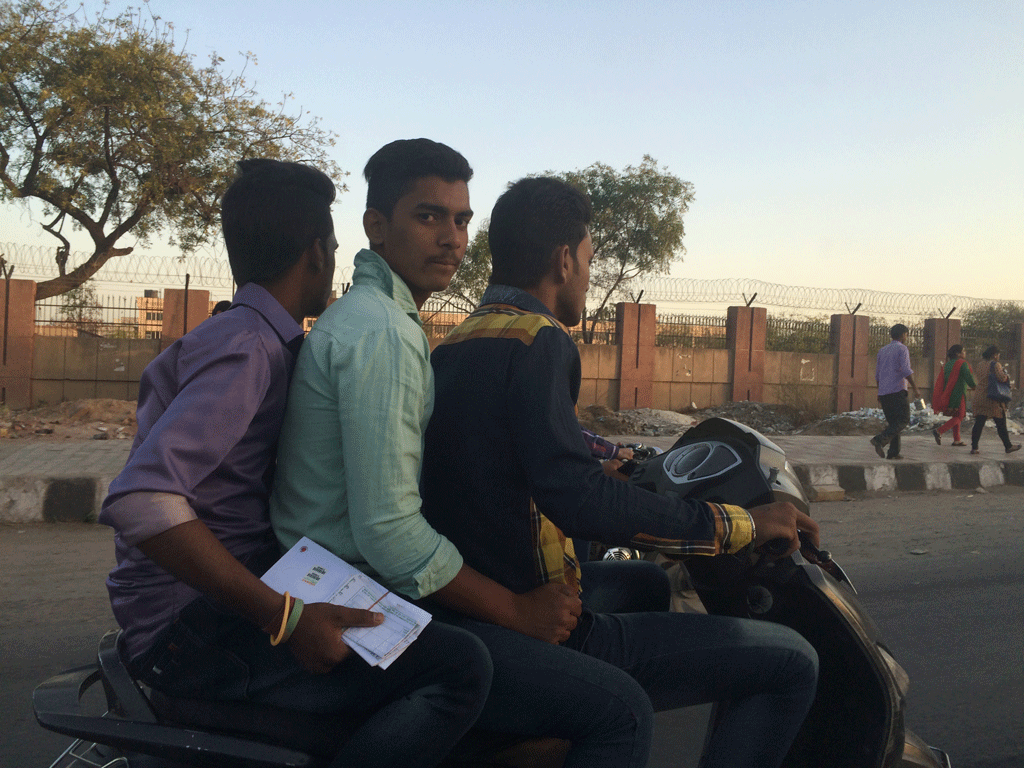
We reach New Delhi late afternoon and are soon amid the usual boisterous traffic with people obviously on their way home from work.
When we reach the Greater Kalesh hotel, we are greeted like old friends! After all, it’s the third time we’ve been here in six weeks. We have been upgraded to a suite, which is appreciated even though some of the furnishings are a little worse for wear. We’re also on the other side of the hotel, away from the traffic, so it’s very quiet. We appreciate the complimentary bowl of fruit which means we don’t have to go outside our room for dinner.
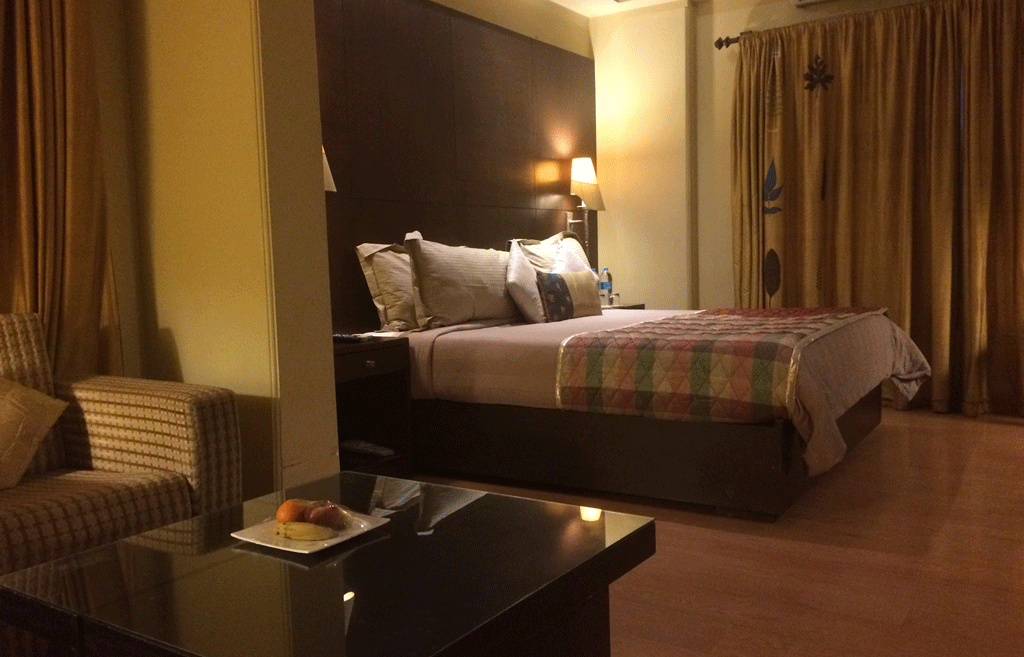
Next morning, we have a leisurely breakfast and Rajendar takes us to the airport. Our flight home to Charles de Gaulle airport in Paris is uneventful. We make our way to the hotel pick-up point to take the coach to the Meridien where our car is waiting for us in the underground car park. Two and a half hours later, we are back in Blois. It’s 11 pm and 7°C, but the house is well heated. We are glad to be home but very, very satisfied with our visit of the Golden Triangle in India which went very smoothly thanks to our tour organisation Trinetra Tours and, in particular, our driver Rajendar. And our marble inlay table will serve as a permanent reminder.




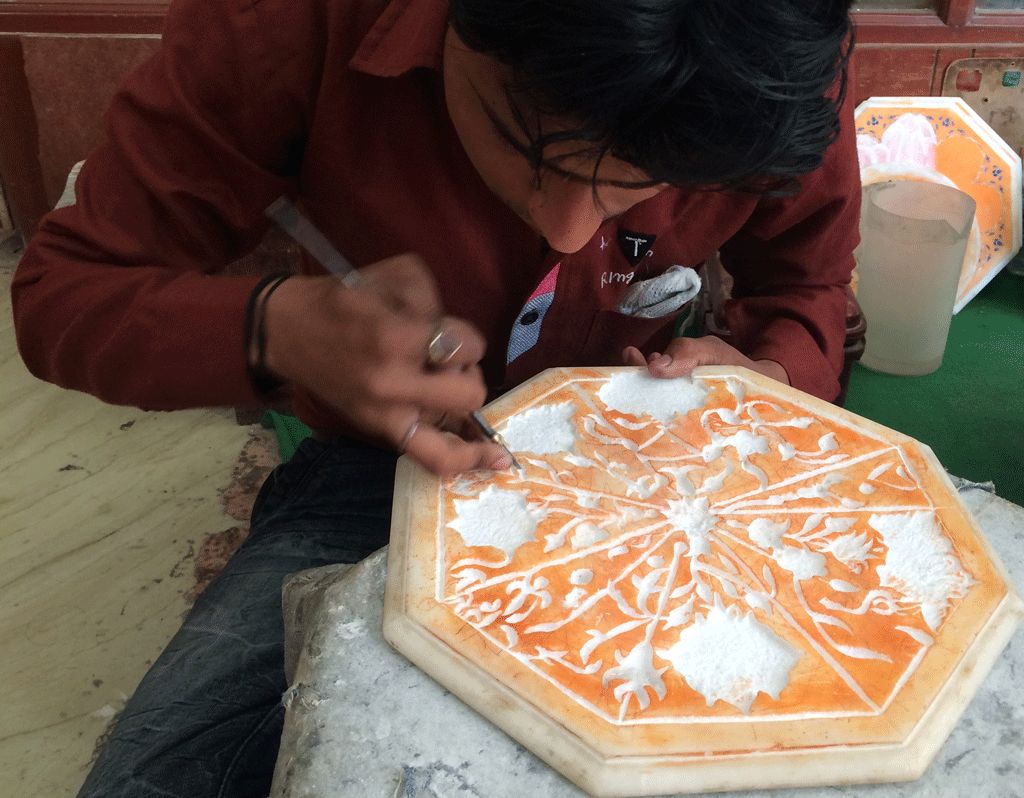
Agra is just amazing. I bought the birthstones of myself, my mother and my MIL and carried them around in a very cool belt (still have it!) until I got to Thailand, where I had them set in silver. My mother just died, but her birthstone is the same as my daughter’s, and I gave her the necklace. I can’t express how much I adore my earrings and necklace. As for MIL, no word for 20 years, good riddance.
These things you will treasure your whole life. They are just stuff not people, but still, they are a distillation of an experience you had.
What a lovely experience! We usually take back something for a new country for the Christmas tree but we totally forgot this time. But we’ll have the table instead!!!
A good purchase, and fascinating architecture, particularly the Fort.